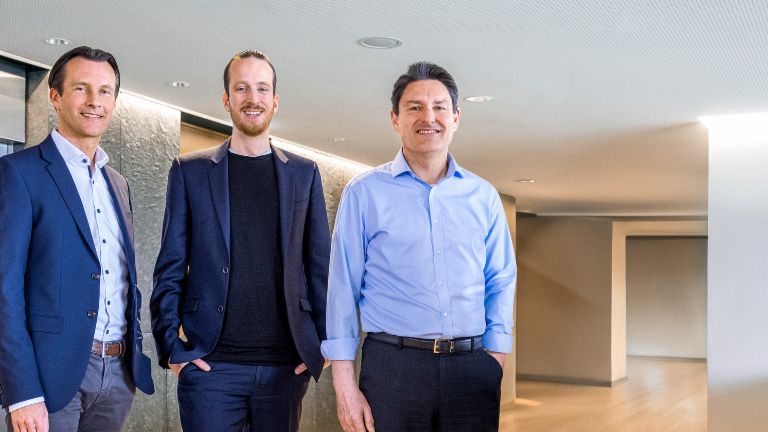- Our recent study shows that inflation and high energy prices are posing major challenges to consumers in Europe.
- More price-conscious: A majority of Europeans are going without or making increased use of special offers.
- Contrary to developments during the Covid-19 pandemic, young people in particular are using cash more often again.
- One in five people took on debt during the crisis. In Eastern Europe, it was one in four.
- Major concerns: Only one in ten is optimistic about their financial future.
Over the past year, consumers in Europe have experienced a sharp increase in geopolitical and financial uncertainty. In particular, the rising prices in the energy market are causing many of them to worry about money. Inflation rates are soaring and many experts believe a recession is inevitable.
In the light of current economic developments, the European Commission is once again cautiously optimistic. In a press release from February 2023, it stated that the year had got off to a better start than expected. The economic downturn in Europe seems to have been averted for the time being. For some consumers in Europe, however, this tide has turned too late, because they are already in financial straits due to price increases. The "Europeans in financial trouble?" EOS Consumer Study 2023 reveals what companies should know about the burden on consumers.
Inflation is making people more price-conscious, but is also increasing debt levels.
Inflation has changed consumer habits. More than one in two respondents (53 percent) stated that they have become more price-conscious in recent months. 44 percent are increasingly resorting to special offers, while 39 percent were giving up unnecessary extras, primarily for travel and leisure activities like dining out (33 percent each), but also for the purchase of new clothing (28 percent).
For many Europeans, however, their money worries had further consequences, with around one in five taking on debt. In half of the cases (49 percent) the main driver was inflation. Around one in four (27 percent) specifically cited higher energy costs as the reason for taking on debt. Most of the debts were for relatively small amounts of less than EUR 1,000 (56 percent). However, in a third of the cases (36 percent), the debt was as high as between EUR 1,000 and 10,000. In only one in ten cases did the amount exceed EUR 10,000.
Regional differences in borrowing.
From a demographic perspective, it is noticeable that especially young people aged between 18 and 34 were incurring debt (22 percent), compared with just 14 percent of the over-50s. If you look at the geographic distribution of new debt, it is also noticeable that eastern European consumers in particular, led by Romania, Hungary (30 percent each), North Macedonia (29 percent) and Serbia (28 percent), have been forced to resort to external funding in recent months. By way of comparison, the European average was just 19 percent.
The reasons for taking on debt also differ in eastern and western Europe, although there are similarities as well. Although western Europeans borrow money for travel more frequently than eastern Europeans (18 vs. 6 percent), they are also getting into debt just as often to cover essential living costs like heating and electricity, food and personal health.
This shows that most of the population has addressed the situation and is handling their financial resources responsibly. Another indication of this is the increased use of cash among 42 percent of respondents (48 percent of 18-34 year-olds). This is a development that went in the exact opposite direction during the pandemic. A possible explanation for this is that for many people, cash still represents security and control, so it is making an unexpected comeback.
What role does debt collection play?
But even the responsible handling of money is not always sufficient to avert financial difficulties. “Especially when it comes to essentials like heating or electricity, it is clear that these people are experiencing an existential liquidity crisis,” says Bartosz Jurczyk, Operations and Strategy Division Director at EOS in Poland. He is aware of the difficult financial situation that many consumers find themselves in, and not just in Poland. He says that incurring debt to offset this kind of existential cash flow problem is an effective tool. But he also knows that a few people – for whatever reasons – will not be able to pay back their debts by the agreed date.
In such cases, a debt collection company needs to demonstrate a great deal of tact, says Bartosz: “It is more important than ever to treat these people with empathy and respect, to listen to them and work with them to find a solution that works for all parties.” Possible solutions include reaching mutual agreements on the level of installments and one-off payments, as well as the consumer’s preferences about when and how they would like to be contacted. “The objective is always to help people reduce their debt quickly in a manageable way.
One option is to offer people a particularly easy process for settling their debts during difficult times. A good example is the EOS service portal in Germany, which offers maximum flexibility to the consumers affected: “Using a slider bar on their smartphone, users can adjust their installments to their preferences, completely anonymously and individually. Eight payment methods are available to them for the transaction, from Apple Pay to Paypal,” explains Sören F. Sörries, Director Portals & Integration at EOS Technology Solutions. “It is very important to us to be user-centric.” Some data models further personalize the collection process, e.g. when it comes to approaching consumers. They know which communication channel and mode of payment the individual consumers prefer.
Debt unavoidable in times of crisis.
At this point, it is not possible to foresee whether the situation for consumers will really improve. But there are considerable concerns: Barely one in ten (9 percent) people give little or no thought to their own financial situation. Inflation (73 percent) and high energy prices (52 percent) are by far the biggest drivers of this anxiety, followed by long-term money problems (25 percent) and unemployment (22 percent).
“In the study, we see that inflation is leaving its mark on consumers,” concludes Marwin Ramcke, CEO of the EOS Group. “Especially in times of crisis, debts are often unavoidable when it comes to overcoming cash flow problems and even salvaging livelihoods. This is a very emotional issue and also causes people to worry about the future, as the survey shows.” At least the figures published by the EU Commission are encouraging and suggest that for most consumers this will only be a temporary shortfall. In any case, Marwin says: "It is important to us to support consumers fairly with repaying the debts. This helps them personally, but also helps the economy into which the money is returned.”

It is important to us to support consumers with repaying their debts. This helps them personally, but also helps the economy into which the money is returned.
As one of the leading international experts in receivables management with locations in 24 countries, EOS works with renowned market research institutes every year to produce market and consumer surveys. The surveys, covering issues like B2B and B2C payment practices, payment methods, digitalization and the use of data, deliver interesting insights.
If you would like to take a look at the detailed results of the study, please don’t hesitate to contact us.
Photo credits: EOS
Explore more from EOS




